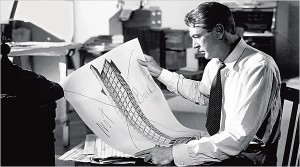
My friend George Holt and I were talking about how architectural education ill-prepares young architects for the world of practice. “Is this sort of detachment from the realities of the profession a deliberate agenda that’s perhaps for some other useful purpose that escapes me?” George asked me. I don’t think so. In part, the detachment is a legacy of the art school tradition that shaped architecture schools since the Ecole des Beaux-Arts and the Bauhaus. Of course, artists have always worked on commission, too, just like architects, but the unspoken ideal is the self-sufficient artist—Van Gogh, Gauguin, Matisse—whose inspiration was entirely personal. In this view, the outside world of patrons, dealers, museums, and the public is extraneous at best, intrusive at worst. There is also a sense that in the architecture studio the external world should be kept at bay, lest it crimp the imagination of the young tyros, who will learn soon enough, the argument goes, about the realities of practice. Thus, even experienced architects set aside their practical knowledge when they put on their teaching hats, and weave the fairy tale of pure design. And then there is the attractive—if grievously flawed—myth of the architect as outsider, as if buildings, large and expensive, were somehow a vehicle for personal expression rather than a product of societal forces.
